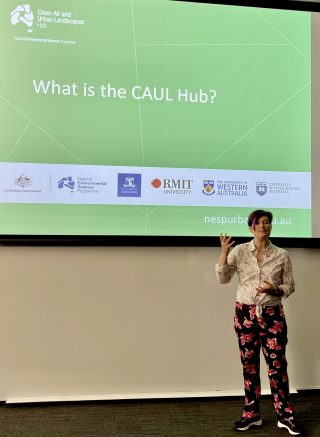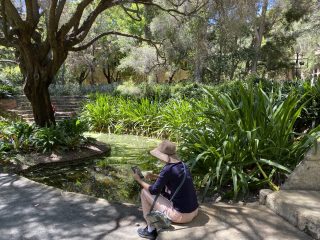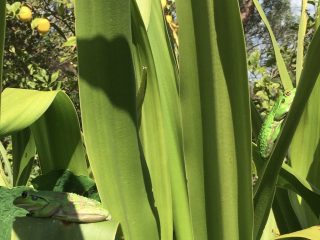Two successful workshops took place last weekend inviting citizen scientists to learn to make observations of WA’s very own motorbike frog and contribute to meaningful science aimed at conserving frogs in Australian cities.
Associate Professor Kirsten Parris (right) from the University of Melbourne’s School of Ecosystem and Forest Sciences covered a lot of ground during each two-hour workshop, explaining:
|

|
During the workshop, Kirsten taught attendees how to conduct field surveys using the CAUL Urban Wildlife app, after which they could be flagged as trained in the administrative backend for the app. In the last third of the workshop attendees visited UWA’s Sunken Gardens to put their new-found skills to the test during a practice frog survey, though sadly, no frogs could be heard or seen. Two days later, a quick afternoon trip to a backyard in suburban Hamilton Hill was resoundingly successful!
Gaia Resources were initially engaged by the CAUL Hub in 2017 to develop the Urban Wildlife citizen science app to enable data capture for a range of urban species – Bell frogs, Flying-foxes and Beneficial insects. We very recently added a fourth module, for all Australian Possums and Gliders, sponsored by the Threatened Species Recovery Hub.
The design allows for multiple projects to be available via a single app login so that volunteers could choose to participate in any project. Each project has an independent data schema and the app would check in to the schema server on startup to ensure the latest schema was in use. This saved users from having to update the app in some circumstances when schema changes were made.
The free CAUL Urban Wildlife app is available on Android and iPhone: https://nespurban.edu.au/platforms/caul-urban-wildlife-app/.
If you’d like to know more about how we can help you with developing a citizen science program, or how a smartphone app could improve your community engagement and scientific data capture, then please leave a comment below, connect with us on Twitter, LinkedIn or Facebook, or email me directly via alex.chapman@gaiaresources.com.au.
Alex



Comments are closed.